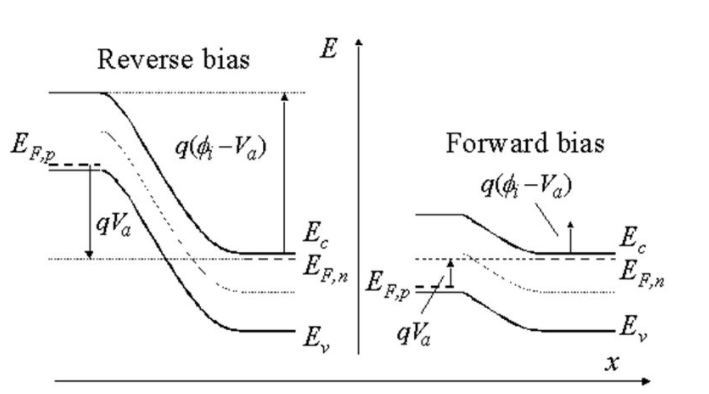this question is partially (but not totally) discussed here:
Why do diodes have a voltage drop?
Does the power drop on a diode become entirely heat?
The conclusion is that, in a forward-biased diode with steady DC current:
the voltage drop represents the necessary energy (per unit charge) to push charge carries (electrons and holes) from one semiconductor to the other.
the power drop on a forward-biased diode is entirely heat.
Let's focus more in detail on both statements. Let's consider the following band diagram in case of forward biasing:
I'd say that:
when the diode is forward biased, holes are pushed from P to N and electrons from N to P, correct?
both electrons and holes' levels change along the junction, since they correspond respectively to the conduction and valence bands. Their jump is the same since both levels are represented by parallel curves. Is the voltage drop of the diode equal to this jump, to twice this jump or other?
what do the charge carriers injected in each semiconductor do after they have passed the discontinuity? Do they recombine and produce heat? Do they pass undisturbed and continue flowing as electric current? In the first stack question it's written that there is a loss of carriers. How can the KCL law be true if some carriers disappear at the discontinuity?

